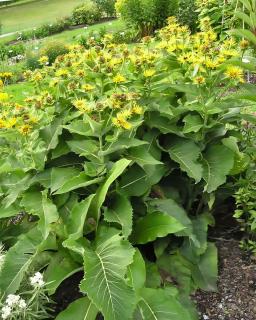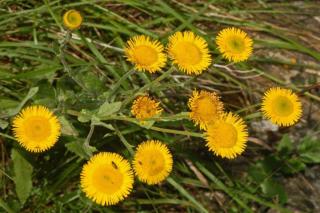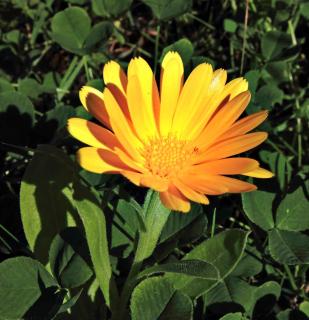

With its beautiful yellow flowers, the huge heart of which Van Gogh would have admired, each one of the Inula species is a magnificent flower bed perennial.
Inula key facts
Botanical name – Inula sp.
Common names – horseheal, elfdock, fleabane…
Family – Asteraceae
Type – perennial
Bearing – bushy or upright, depending on the species
Height – from 8 inches to 6 feet, again depending on species
Planting density – variable (per species)
Exposure – sunny to partly sunny
Soil – any type, well drained
Flowering – July, August
Ease of care, choice of many sizes, shapes and leafage make it a guaranteed asset in your landscaping.


The best way to get new Inula specimens is clump division. To do so, pull the plant out with a spade fork and tear the root ball apart with your hands. If it’s too difficult, a sharp spade can wedge and cut its way through. Then simply replant each half in the ground, separately.
Depending on weather, you might discover bouts of powdery mildew. If this lasts for more than a week or two, start applying a treatment.
Taller species (Inula helenium for instance) will look great as standalones. However, for most other species, Inula looks best when surrounded with other flowers such as:
Inula helenium: topping off at nearly 6 feet (2 meters), this is one of the tallest inula species. The voluminous root clump, large leaves and flowers hint to its vocation and calling: I. heleniumlarge flower beds.

Inula royleana: an in-between, just the right size compared to I. helenium and I. ensifolia ‘Compacta’: it only measures about 20 inches (50 cm). Its large 5-inch golden yellow flowers will flash their joy around your summer garden.
Inula helenium or Great Inula is an edible plant, it’s even quite often used for its medicinal benefits. The roots of Inula helenium is indeed often categorized as a herb. It works for several different types of ailments, for instance against cough and various inflammations of organs involved in breathing.
The most common manner of using Inula is simply to brew an infusion. Steep the powdered roots in hot water and it will soothe sore throat and clear airways.
Using Inula helenium is not recommended for pregnant women.